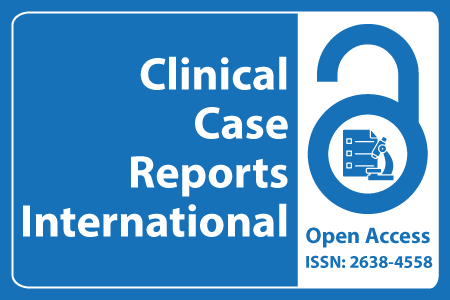
Journal Basic Info
- Impact Factor: 0.285**
- H-Index: 6
- ISSN: 2638-4558
- DOI: 10.25107/2638-4558
Major Scope
- Renal Disease
- Cardiology
- Nutrition and Dietetics
- Neurological Surgery
- Transplantation Medicine
- Dentistry and Oral Medicine
- Mental Health
- Pediatrics
Abstract
Citation: Clin Case Rep Int. 2022;6(1):1273.DOI: 10.25107/2638-4558.1273
Lead (Pb), Cadmium (Cd) and Essential Element Levels and their Interactions: A Hospital Based Case Control Study in Anemic Children
Sarath Babu S, Srinivasa Reddy Y, Jayapal V and Dinesh Kumar B
Food and Drug Toxicology Research Centre, ICMR-National Institute of Nutrition, India
Department of Pediatrics, Niloufer Hospital, India
*Correspondance to: Yathapu Srinivasa Reddy
PDF Full Text Research Article | Open Access
Abstract:
The prevalence of anemia is still higher among the developing countries like India. In addition, a higher level of multiple micronutrient deficiency and exposure to heavy metals through environment priming the health issue. The etiology of anemia is multi-factorial, among physiological iron deficiency and hemopoietic toxicity caused by Lead (Pb) are considered as important. Current study aimed to unveil serum essential element (Fe, Zn, Cu, Mg and Ca), blood Pb and Cd levels among anemic (Group-A; n=77) and non-anemic children (Group-B, n=77). Blood Pb, Cd and serum elements were quantified by Graphite Furnace and Flame Atomic Absorption Spectroscopy, respectively. Hemoglobin, reticulocyte count and δ-Aminolevulenic Acid Dehydratase (δ-ALAD) activity were also assessed. Mean Hb, serum Fe and δ-ALAD activity was significantly (p<0.01) lower in Group-A compared to Group-B. Blood Cd levels were non-detectable, whereas mean Pb levels were higher among Group-A compared to Group-B but in prescribed safe limits (<10 μg/dL). Group-A children’s serum Fe levels correlated positively with ALAD activity (p<0.05), serum Zn and Ca levels (p<0.01); whereas a significant (p<0.01) inverse correlation was noted between Hb levels and serum Zn levels. Elevation of δ-ALAD activity is presumed under IDA to meet the physiological requirement of Hb, but in the current study despite severe anemia in Group-A no such observation was noted. In conclusion, anemia among Group-A children may be iron deficient rather induced by hematopoietic toxicity. Further, Zn deficiency is more prevalent in children of both the groups, which need intervention strategies. Dual deficiency effect of Fe and Zn on physiological levels and function of δ-ALAD activity needs to be elucidated.
Keywords:
Iron deficiency anemia; Blood Pb levels; δ-ALAD; Serum essential elements
Cite the Article:
Sarath Babu S, Srinivasa Reddy Y, Jayapal V, Dinesh Kumar B. Lead (Pb), Cadmium (Cd) and Essential Element Levels and their Interactions: A Hospital Based Case Control Study in Anemic Children. Clin Case Rep Int. 2022; 6: 1273.













